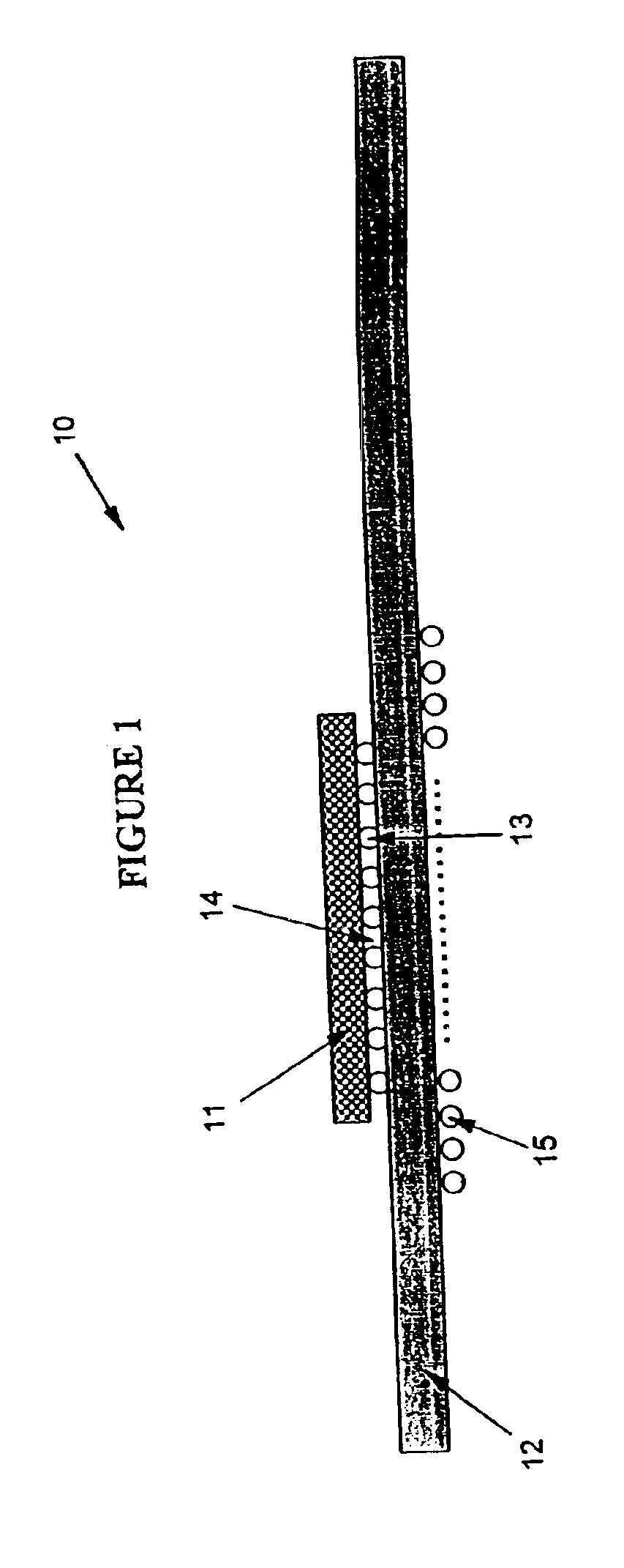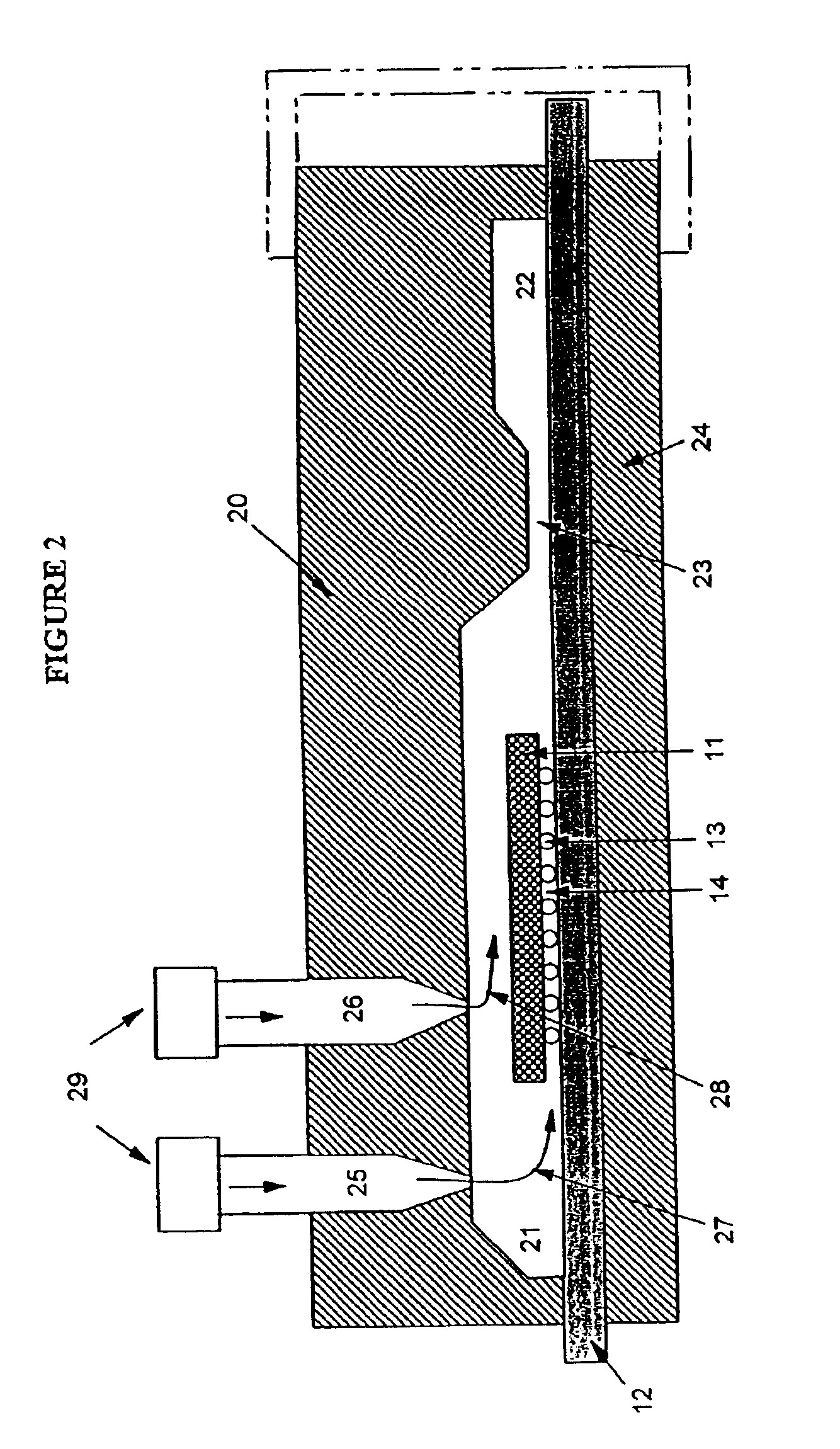Transfer molding of integrated circuit packages
- Summary
- Abstract
- Description
- Claims
- Application Information
AI Technical Summary
Benefits of technology
Problems solved by technology
Method used
Image
Examples
Embodiment Construction
[0025]Proper encapsulation of a flip chip integrated circuit module with currently available transfer molding or over-molding encapsulating processes, raises a number of problems and thus is a generalized concern. It is, of course, desirable to encapsulate the flip chip module on a substrate to strengthen and reinforce the physical connections between the flip chip module and the substrate but at the same time, to ensure all air is removed to minimize humidity absorption and points of stress caused from any entrapped air. Underfill is desirable to reduce the stress on the solder joints resulting from the normal cycling of the module during operation and the different temperature coefficients of the module and the substrate to thereby prolong the fatigue life of the package before failure occurs. Any sharp corners of a mold could result in air being entrapped within the encapsulation and this is undesirable. Present processes tend to also cause restrictions which impact the possible ...
PUM
| Property | Measurement | Unit |
|---|---|---|
| Height | aaaaa | aaaaa |
Abstract
Description
Claims
Application Information
 Login to View More
Login to View More - R&D
- Intellectual Property
- Life Sciences
- Materials
- Tech Scout
- Unparalleled Data Quality
- Higher Quality Content
- 60% Fewer Hallucinations
Browse by: Latest US Patents, China's latest patents, Technical Efficacy Thesaurus, Application Domain, Technology Topic, Popular Technical Reports.
© 2025 PatSnap. All rights reserved.Legal|Privacy policy|Modern Slavery Act Transparency Statement|Sitemap|About US| Contact US: help@patsnap.com



